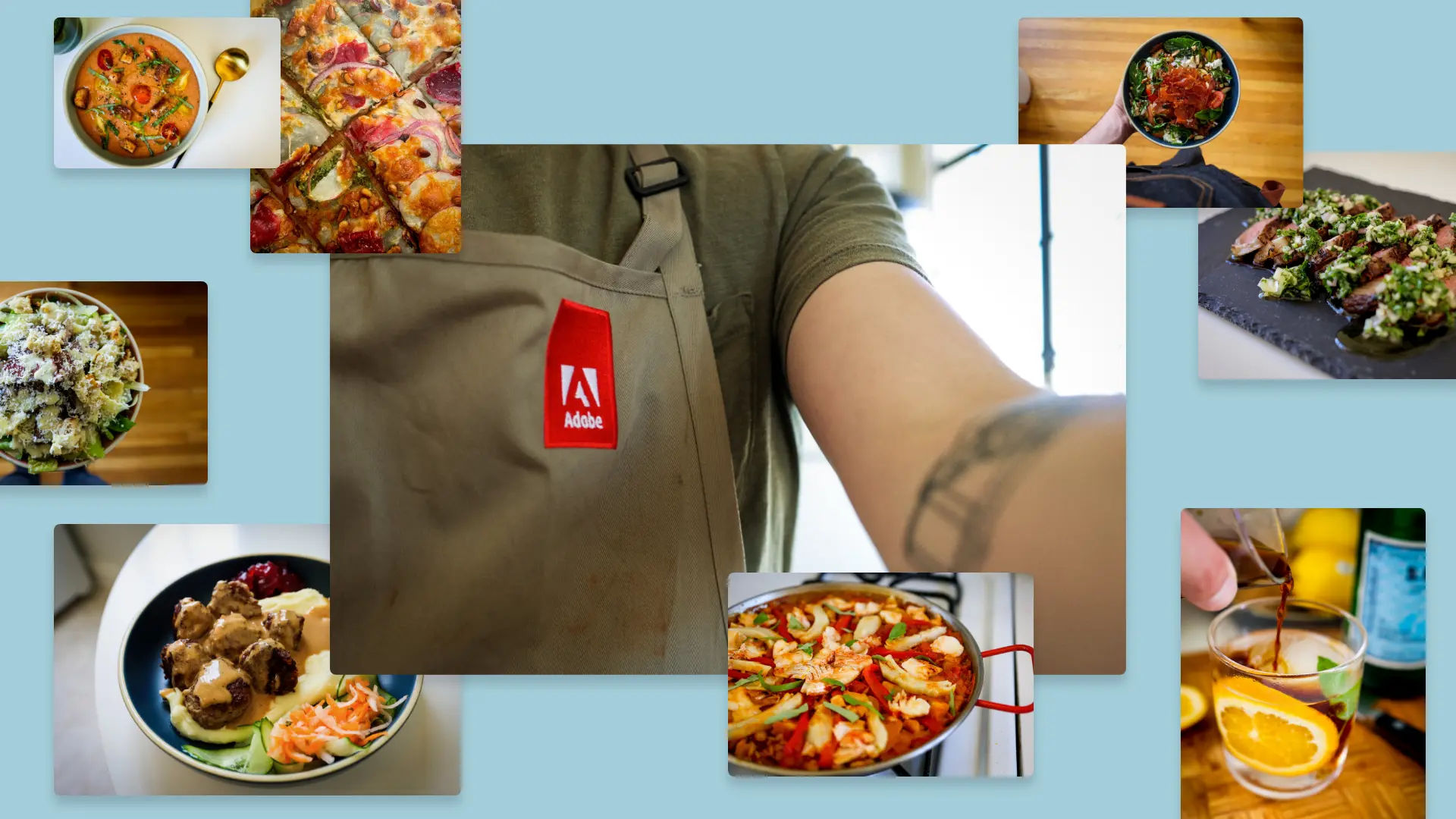
note
Zen & The Art of Recipe Development
Cooking experiments as a form of COVID escapism
Hacks, Hobbies, and Side Hustles is a for-fun internal presentation series that began as a one-time event and fast became a popular way for us to get to know our talented colleagues. It has only two guidelines: finish in five minutes and focus on a passion that exists outside of Adobe. Learn where creativity takes the members of Adobe Design when they’re not working.
I’m a designer on the Adobe Premiere Pro team, so I always thought that the first time I talked about a side creative pursuit it would be about filmmaking, but preparing food very much became a hobby throughout the course of the pandemic. I’m not just talking about an obsession with breadmaking, although there was a very serious obsession with breadmaking, but more about learning to cook and create recipes.
I’d never had a lot of exposure to cooking; I’d cook simple stuff at home—stir fry, rice bowls, a roast beef sandwich—but it was mostly something done out of necessity on nights when I didn’t have plans. And then a little thing happened in the beginning of 2020 that forced all of us to stay home and not go out and not do all the things we love to do. In addition, many of my friends and family moved away and I found myself stuck in my apartment with my cat, Ingrid Bergman, for hours upon hours every week.
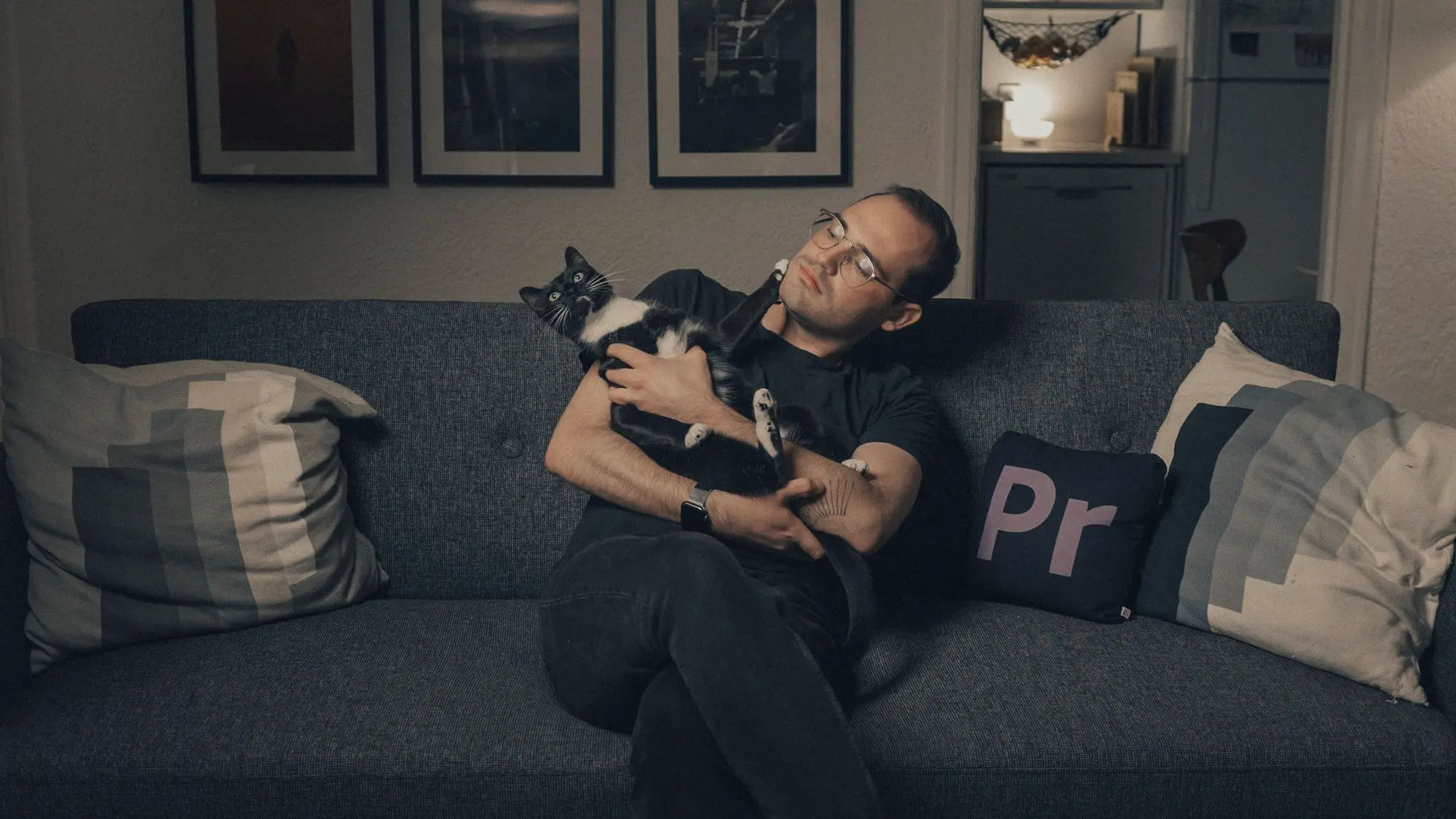
Since I had so much time on my hands and I needed to eat, I started jumping online for cooking information. I eventually came across creators like Joshua Weissman (@flakeysalt on TikTok), who talks about developing your culinary intuition, and books like SALT FAT ACID HEAT, which is less a prescriptive cookbook and more about the foundation of cooking and what it takes to create a well-balanced meal.
Over time I found myself starting to experiment with a lot of the techniques. My cooking journey over the last two years can be viewed through that lens of exploration because it’s how I’ve been developing my cooking intuition: There’s day-to-day cooking but I also set aside big chunks of time on the weekends to do these experiments to try to learn something new.
Experiment 1: Pantry Staples
It’s easy enough to buy prepared butter or pickles or pesto or kimchi or jams and jellies from the store but when I take the time, a couple of hours each week, to prepare those ingredients myself, there’s an added feeling of pride when a dish comes together and I know that everything, down to the butter, was made by hand.
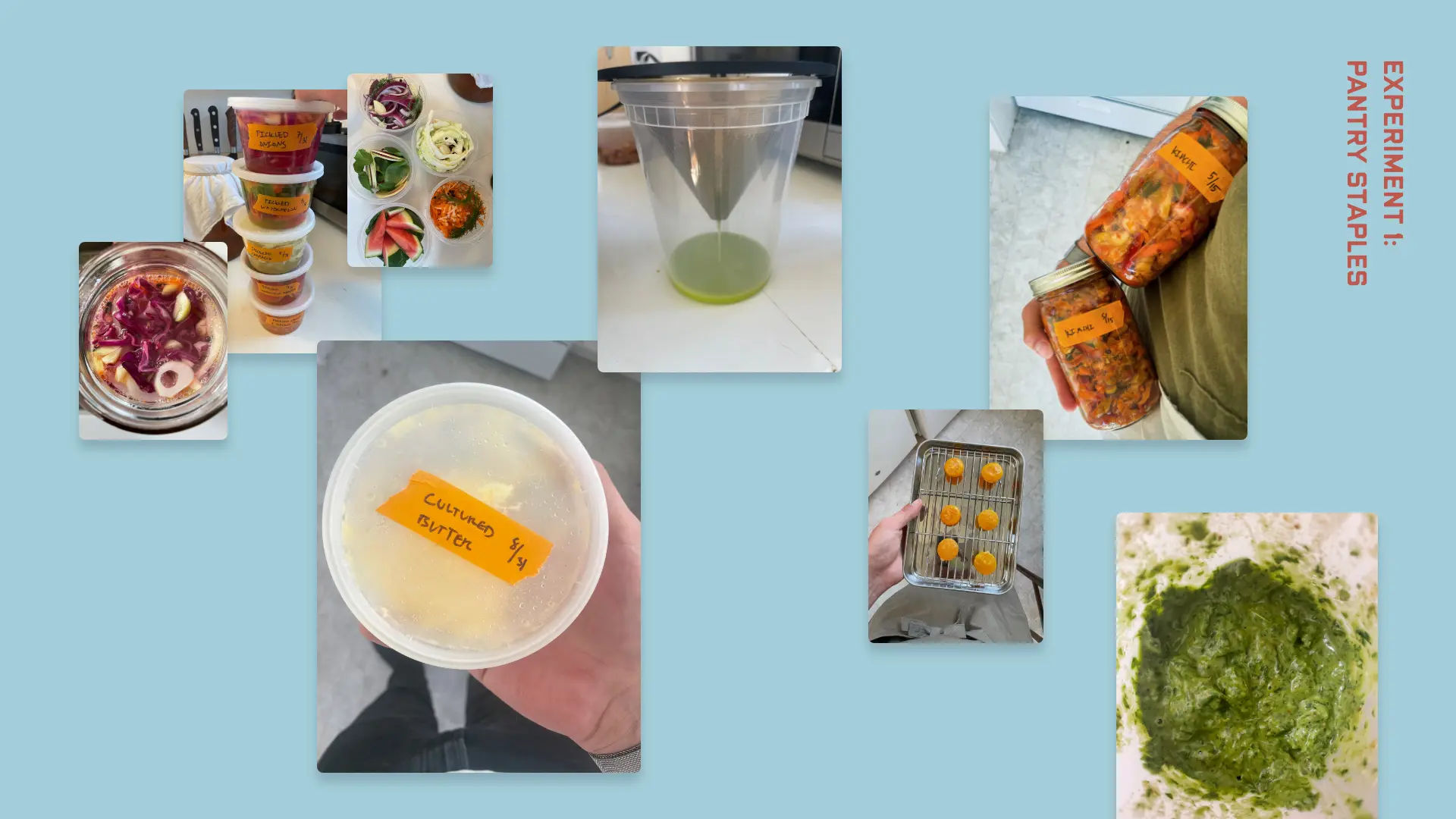
Once I’ve put the work into making these staples there’s an incentive to use them before they go bad. There’s also an incredibly fresh taste that inspires me to create things based on what I have in the fridge.
Experiment 2: Plating
Plating is the art of food presentation. Looking back at one of my first attempts at plating a dish—blackened salmon with celery puree and random microgreens and flowers—it (below left) was both a bit over the top and didn’t have a lot going on. It also tasted bland. If I compare it to a later plating experiment—smashed cucumbers marinated in soy sauce and mirin, topped with fried anchovy breadcrumbs—where I just piled things simply (below right), but paid a lot of attention to the actual ingredients, the more recent one is much more special because the ingredients are special.
It didn’t take me long to learn that if you go over the top with plating but don’t take care with the ingredients then having the plate look good doesn’t matter much.

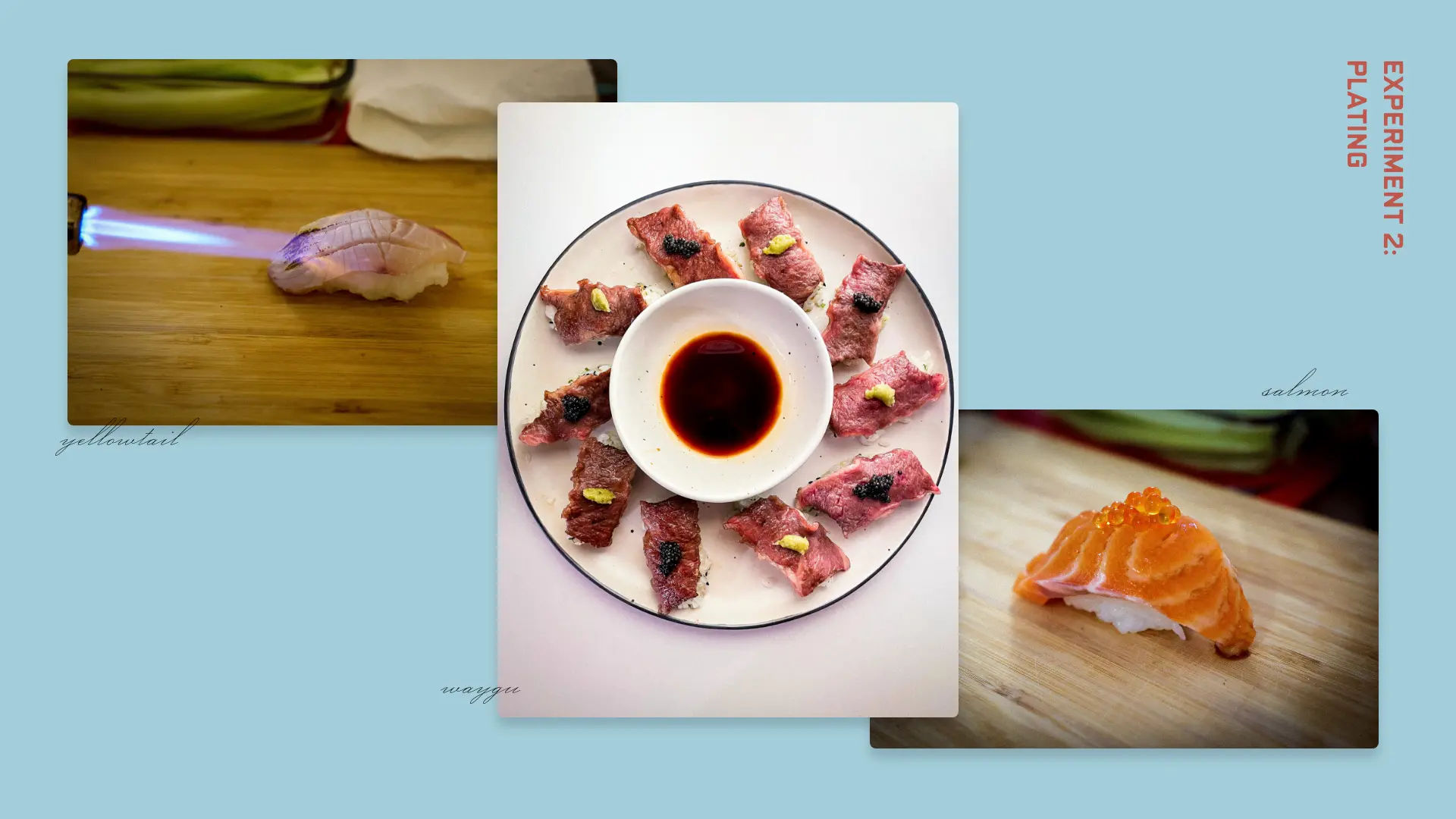
Experiment 3: Multiple Courses
I live alone so I’m usually just cooking one thing at a time for myself. This was the first time I’d ever invited people over and created a meal that flowed from beginning to end. Asian-fusion-inspired, it consisted of miso asparagus, salmon pate over sushi rice, bao buns, and grilled peaches with matcha powder and condensed milk.
It was fun to think about how ingredients transform from the beginning of a meal to the end of it.
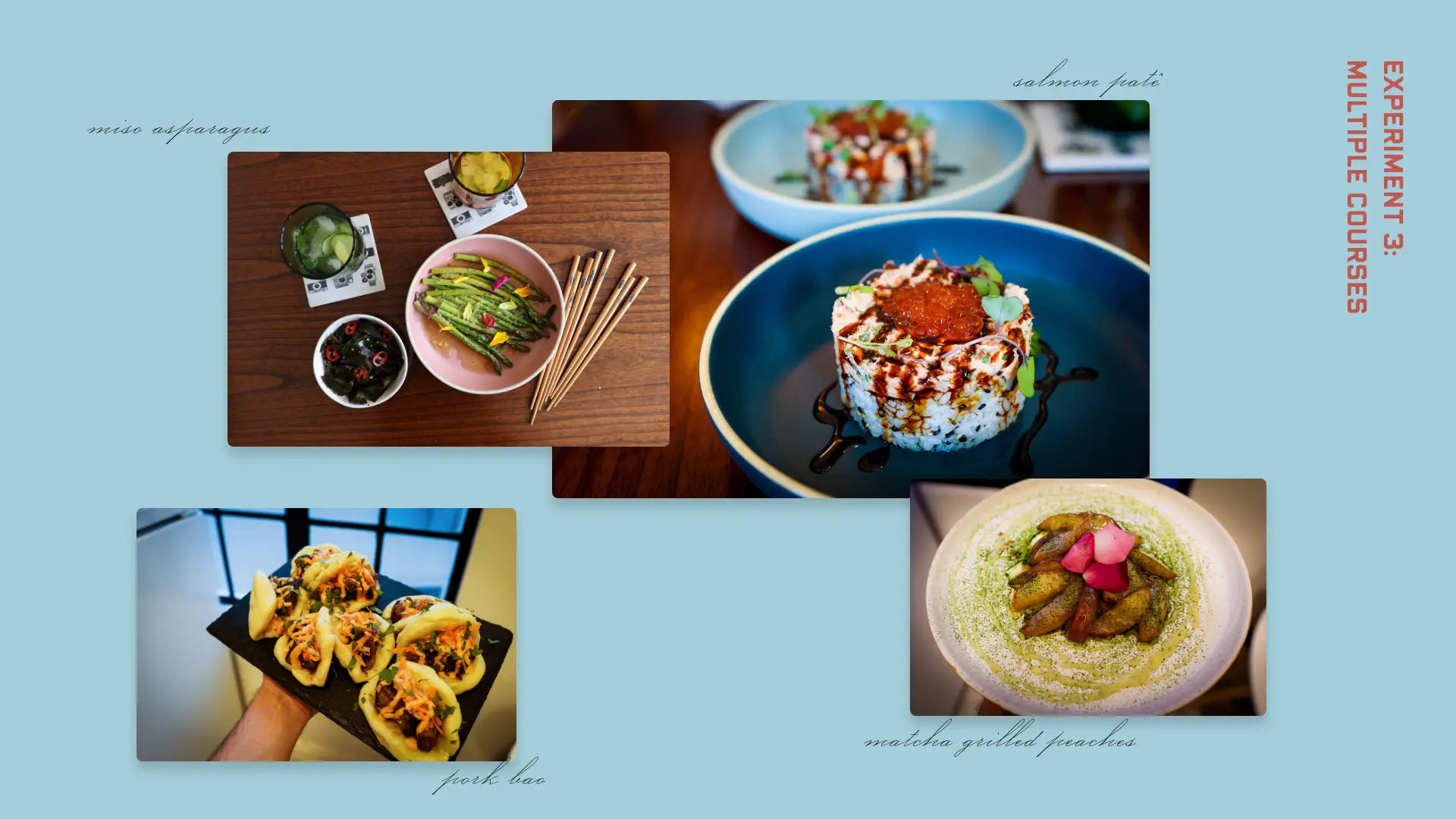
Experiment 4: Recipe Development
After about a year of really diving into cooking, and posting about it on Instagram, friends started contacting me for recipes. Up to that point I hadn’t been following or creating recipes, but I really wanted to start trying to share some of my thoughts.
At around that time, my sister and her boyfriend moved to San Francisco; he loves steak, she loves lobster, and I’d been watching a lot of Hell’s Kitchen and constantly hearing Gordon Ramsay ask, “Where’s the damn risotto?” I thought risotto wouldn’t be that hard to make so I decided to try to make a Surf ‘n’ Turf Risotto for them.
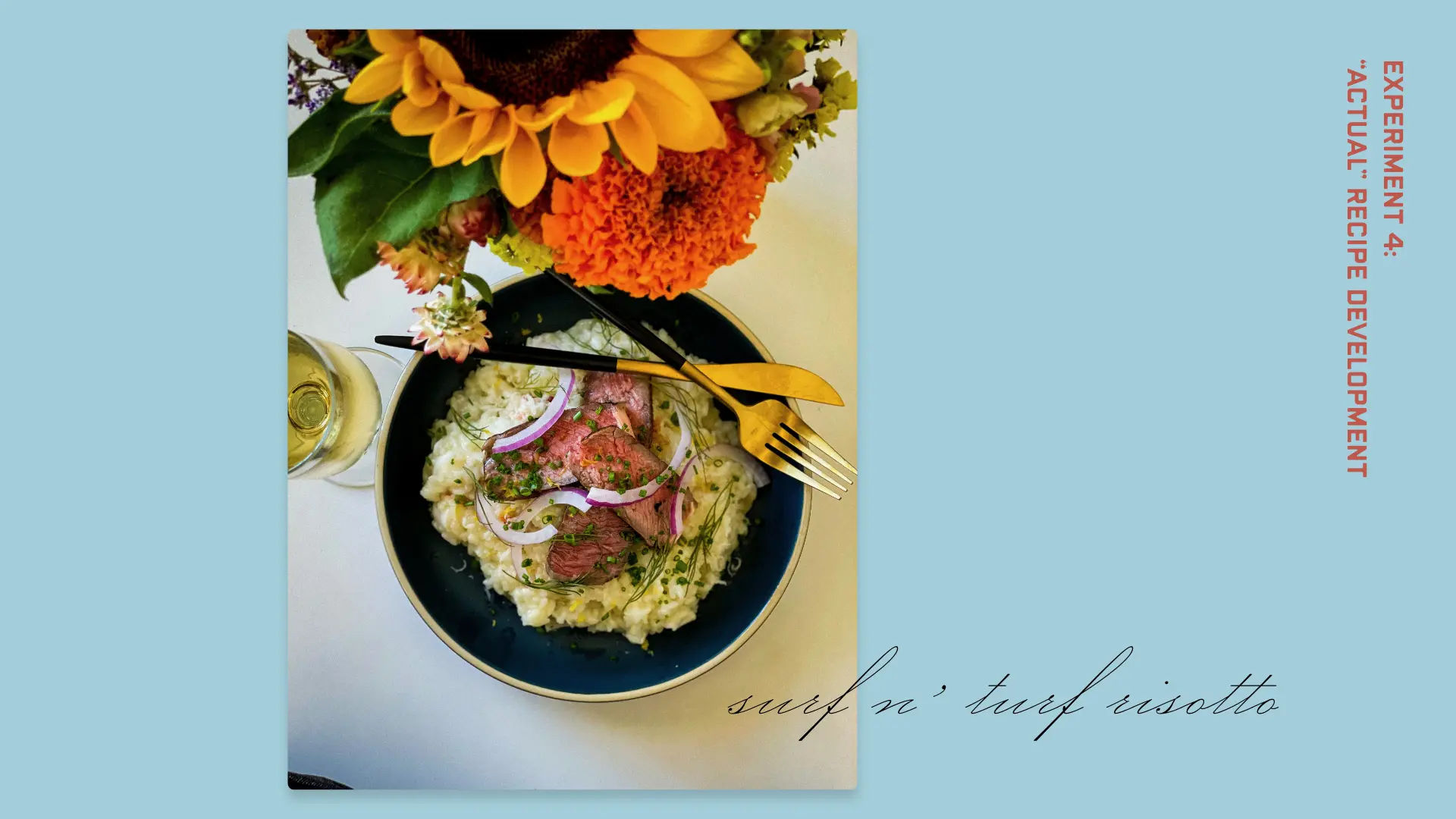
A week later I’d developed that into a recipe, with well thought out proportions, that I could share on Instagram and TikTok. I did it again with another recipe I called Over-the-top Fish & Chips, for which I took a very simple bar food and upleveled every single part of it: I used a beer-battered Atlantic cod, chips twice fried in duck fat, served over a pea and mint mash, with a tarragon tartar sauce on top.

It was fun to move beyond the realm of throwing things together based on what I have in my fridge and instead intentionally putting things together to share with other people.
Experiment 5: Becoming one with the food
This is going back to the basics with one ingredient and cooking it in as many ways as possible. So in phase two of this experiment (phase one was pasta) I bought a five-pound bag of potatoes and spent an entire Saturday cooking them. I ended up making seven different recipes that day; three of them didn’t work out but four of them did. I really like this idea of trying to uncover the versatility of a single ingredient and figuring out the different ways to transform it. My next experiment will be with beets.
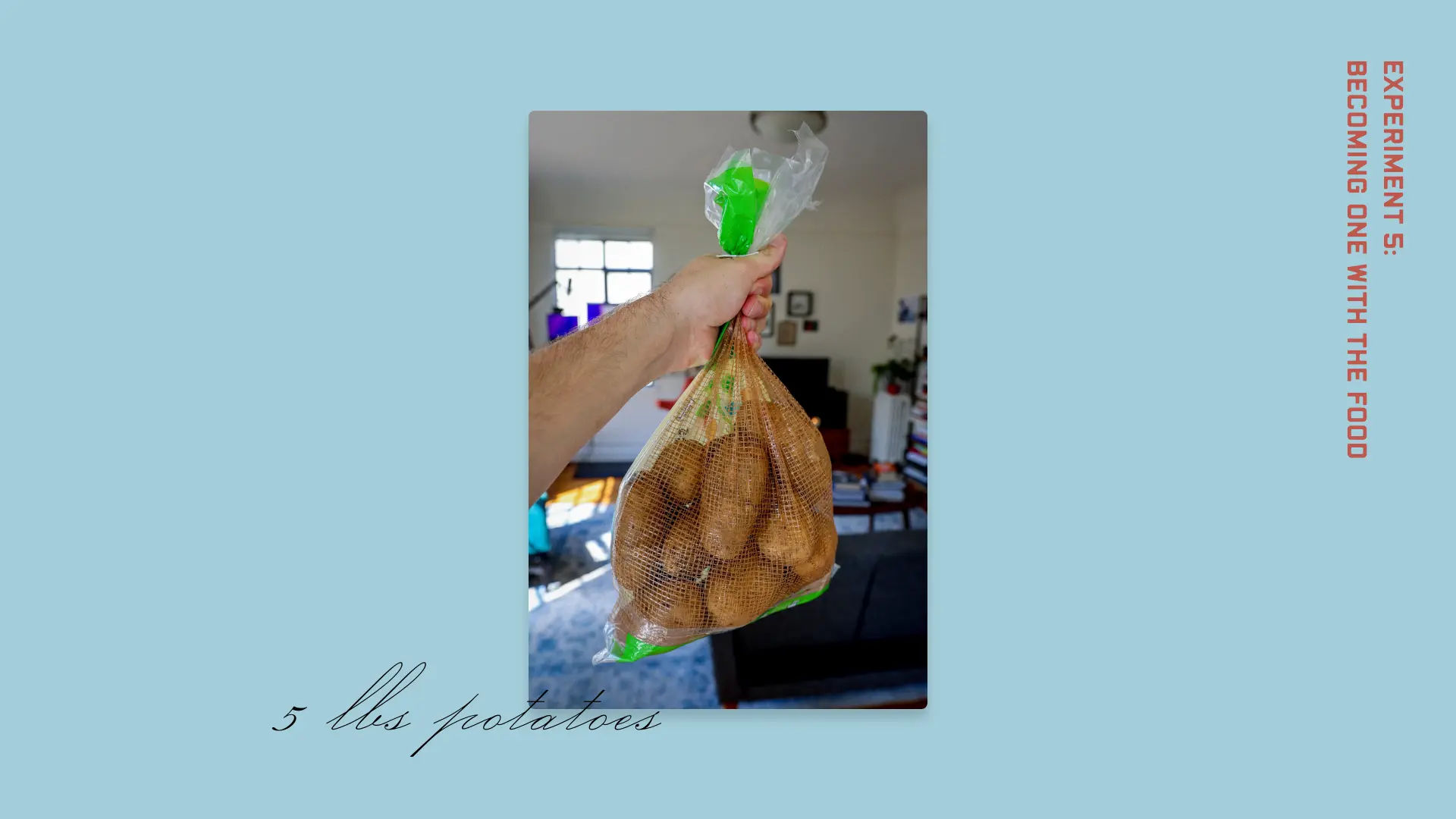
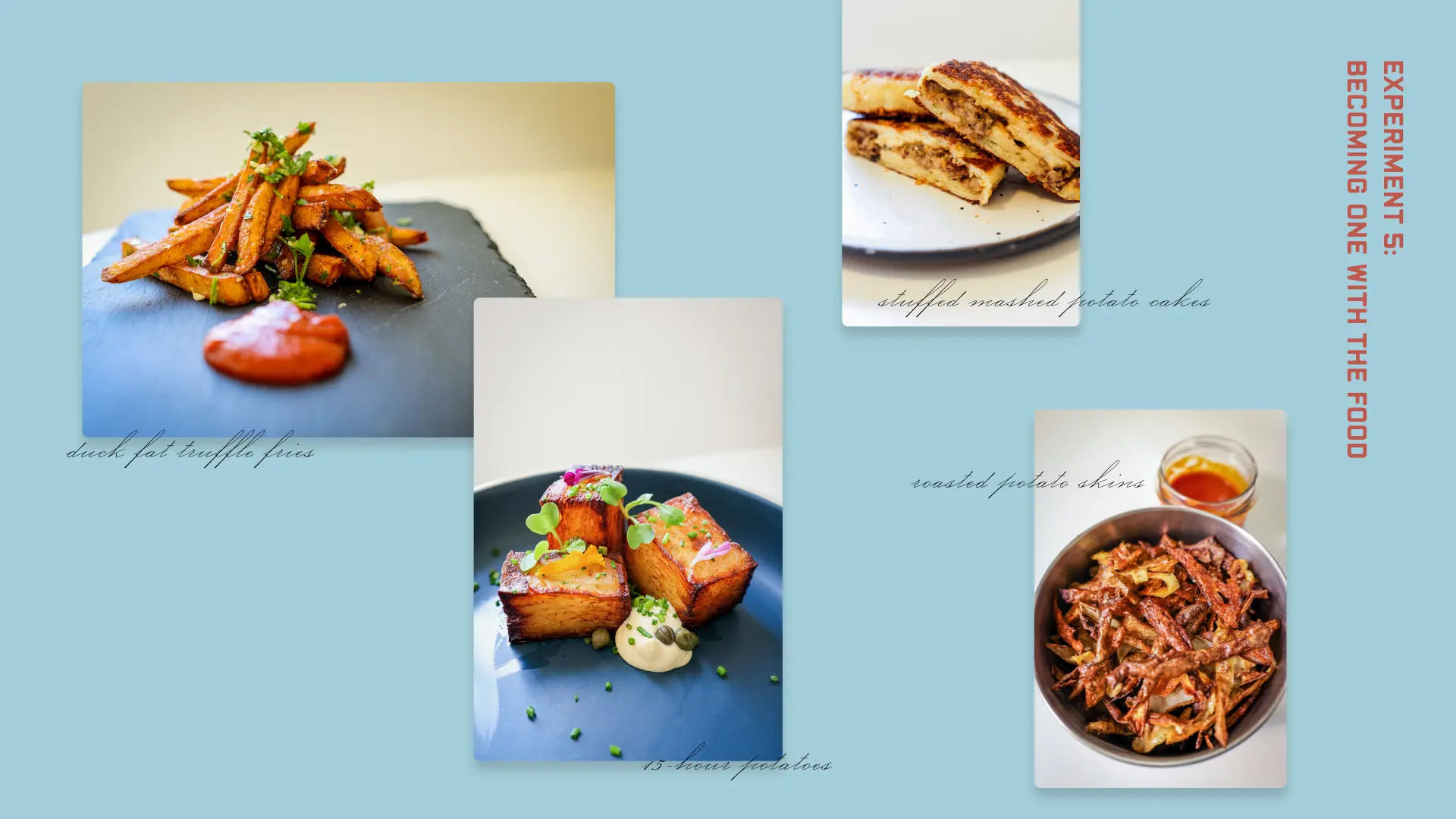
Experiment 6: Exotic Ingredients
For this random experiment I spent several days dialing in the ingredients and techniques. for the most pretentious version of breakfast toast possible.
It’s fried sourdough bread, with French scrambled Japanese golden eggs, topped with a truffle hot sauce, candied bacon roses with gold leaf, and the majority of a one-ounce jar of caviar. For all the time I spent trying to put it together, it wasn’t all that good. But I did learn that using exotic ingredients (like gold leaf and caviar) just to show off and be able to say that I’d used them wasn’t worth it.
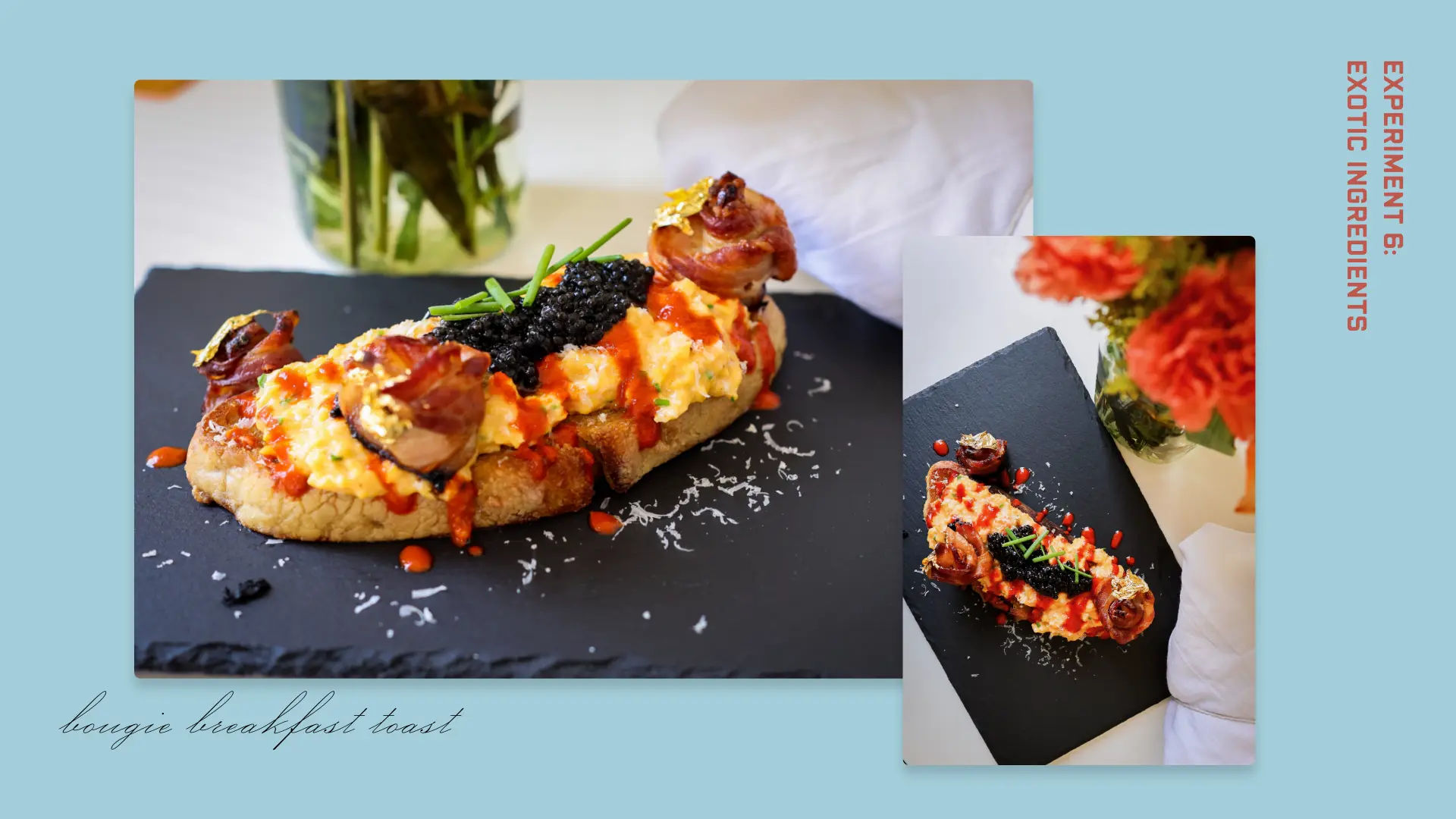
Taking the time to honor the ingredients makes a lot more sense. As an example, I’d been wanting to use freshly grated wasabi, from wasabi root, so I used it to make a wasabi aioli with some rare chunks of rib eye steak topped with salmon eggs and sesame seeds and it was mind-blowingly good. And it only took 30 minutes to prepare as compared to the abomination of luxury I’d prepared earlier.

My cooking journey has been a great way to get to know myself and what I like and I’m excited to continue. It’s fun wrapped up in a life skill and makes for great content on Instagram and TikTok.